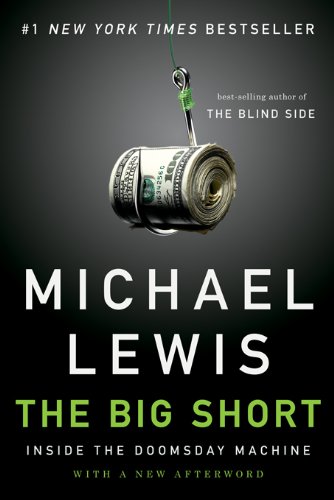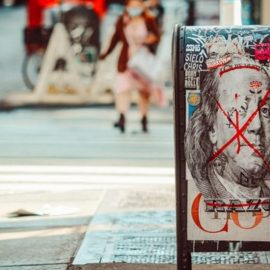

This article is an excerpt from the Shortform summary of "The Big Short" by Michael Lewis. Shortform has the world's best summaries of books you should be reading.
Like this article? Sign up for a free trial here .
What caused the United States subprime mortgage crisis in 2008? How did the mortgage meltdown spill out into a global financial crisis?
The United States subprime mortgage crisis was years in the making. However, few could anticipate one of the biggest financial crises in history—in spite of the warning signs. At its heart, was a relatively new class of asset: the mortgage-backed security.
In this article, we’ll discuss how mortgage-backed securities caused the biggest financial crisis in the eight preceding decades.
What Caused the 2008 Subprime Mortgage Crisis?
The deadly virus that infected the global financial system in 2008 was a relatively new class of asset: the mortgage-backed security. At its most basic level, a mortgage-backed security was a bond, a debt instrument. But it was very different from a traditional bond that might be issued by a government or a corporation. These latter types of bonds were essentially loans, for which the lender would be paid a fixed interest rate over a given period of time until the bond matured and the bondholder received the principal (or “face value” as it’s sometimes known).
Traditional bonds always entailed some level of risk (the company or government from which you purchased your bonds could default, or fall behind on; payment or interest rates could rise and erode the value of your bond on the open market), but these risks were relatively transparent and easy-to-understand for most investors. This was not to be the case with mortgage-backed securities.
Mortgage-backed securities brought the world of high finance into the lives of everyday Americans—even if they had no idea how much their homes had become chips on the table in the vast casino of global finance. A mortgage-backed security was a bundle of home mortgages (often running into the thousands) that had been packaged together into a tradable asset. Investors would purchase different tranches, or tiers, of the bonds, only now they were exposed to a much higher risk of actual defaults, because the bonds were composed of subprime mortgages.
Subprime mortgage loan originators were happy to issue loans to almost anybody. Bad credit score? No problem! No income? Nothing to worry about! Past history of delinquency and/or foreclosure? Everyone deserves a second chance!
Home prices seemed to be going up and up with no end in sight. Indeed, the U.S. was living through a period in which the residential housing market had been on a general upward trend since the end of World War Two. The most secure, rock-solid investment appeared to be in homes. For this reason, subprime lenders were largely unconcerned with the risk of default. With the price of their homes always rising, borrowers would always be able to refinance easily. Refinancing simply meant using the equity in one’s home as a form of collateral to obtain a new loan. With this cash, people could pay their original mortgages (thus eliminating the possibility of default) and just take on new debt. It was a way to use a home as a piggy bank, a source of easy cash for over-extended borrowers.
The Contagion Spreads
By October 2006, the doomsday was already underway. Home prices were falling and borrowers were defaulting. The bonds started turning sour and the big players on Wall Street began to feel the pain. In June 2007, Bear Stearns announced that it had lost $3.8 billion on subprime mortgage securities.
The exposure to the fallout from subprime wasn’t just limited to Bear Stearns. British bank HSBC also announced in 2007 that they had taken major losses in their subprime lending business. These bonds were like a virus that had infected all of the major financial firms. And given the complexity of the CDOs, very few people inside or outside these firms could tell exactly how much exposure they had to subprime. No one knew for sure just how much of these toxic assets were littered across the balance sheets of the world’s leading financial institutions.
Final Words: Greed Fueled It All
Above all, greed and short-sightedness were the prime drivers of the 2008 subprime mortgage crisis. The big banks saw that they could get rich by extending mortgage loans to the least-creditworthy Americans and then bundling those loans into complex financial derivatives that they sold off to unwitting and uninformed investors.
In just a few years, these poorly understood financial products spread like a virus throughout the financial system, exposing both Wall Street and Main Street to catastrophic risk. Major players—including the big investment banks, the ratings agencies, insurance companies—all contributed to the creation and proliferation of these dubious financial innovations because they were enormously profitable.
Ordinary homebuyers weren’t inexcusable either—many took on mortgage terms that they had little chance of being able to meet, and some bought multiple houses on meager salaries. While the deceptive nature of how mortgages were marketed played a part in this behavior, consumers were also clearly trying to cash in on skyrocketing housing prices.
In short, all major stakeholders in the ecosystem were fueled by the desire for profit, which made it easy to overlook the risks.
———End of Preview———

Like what you just read? Read the rest of the world's best summary of "The Big Short" at Shortform . Learn the book's critical concepts in 20 minutes or less .
Here's what you'll find in our full The Big Short summary :
- How the world's biggest banks contributed to the 2008 financial crisis, greedily and stupidly
- How a group of contrarian traders foresaw the bubble popping, and made millions from their bets
- What we learned from the 2008 crisis - if anything






